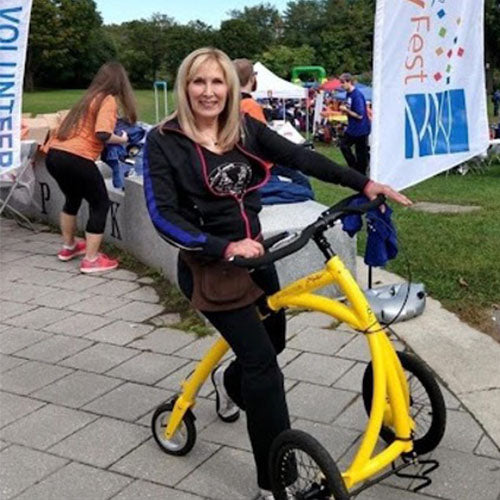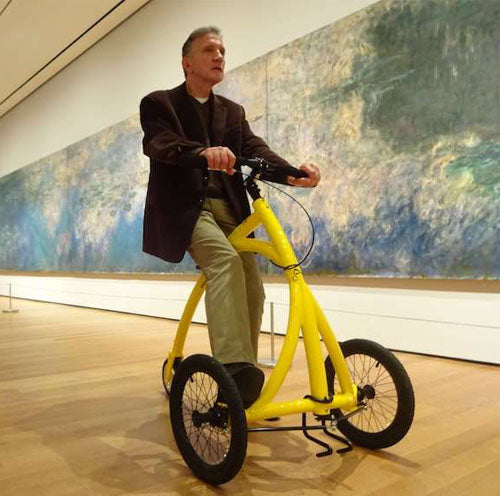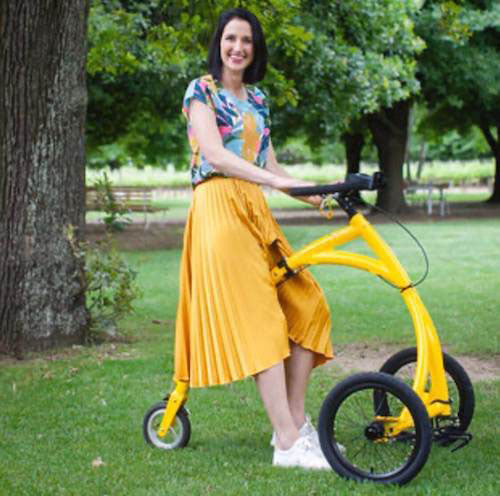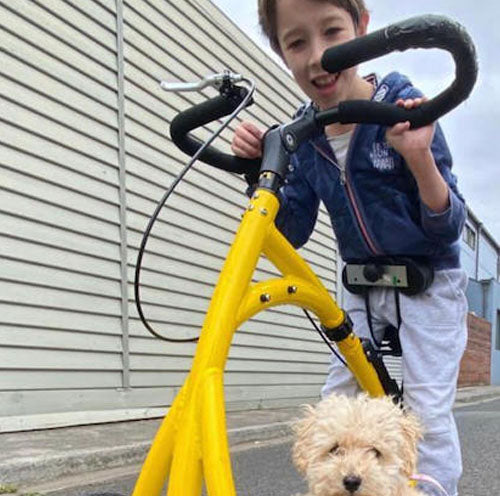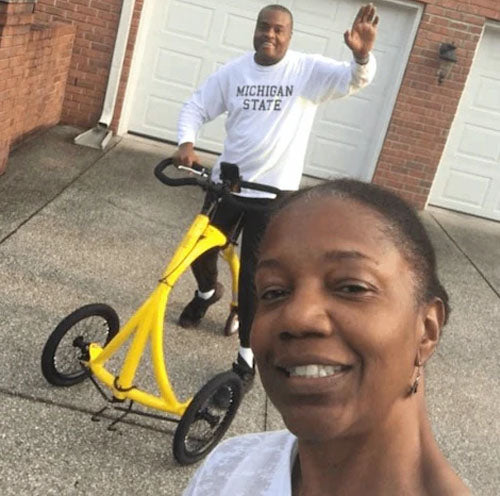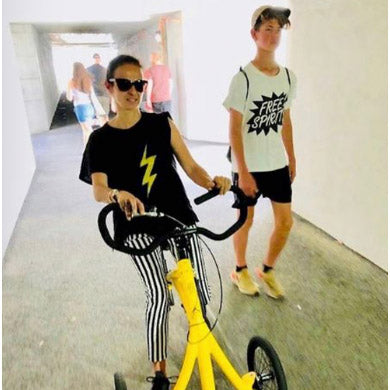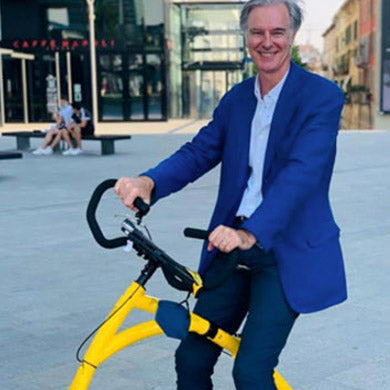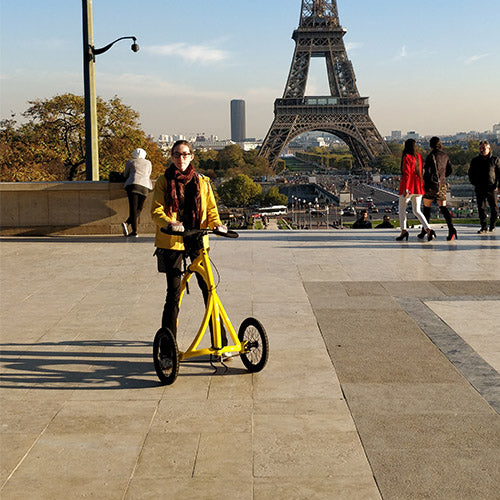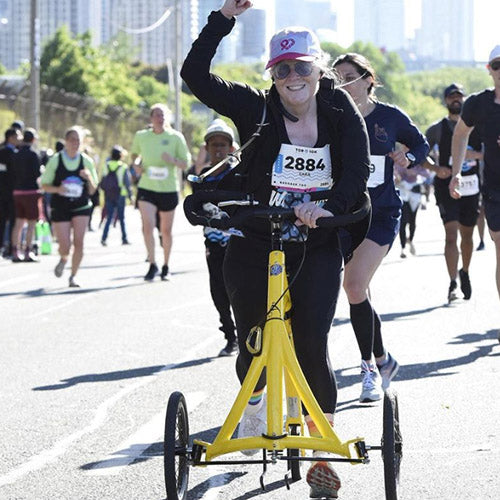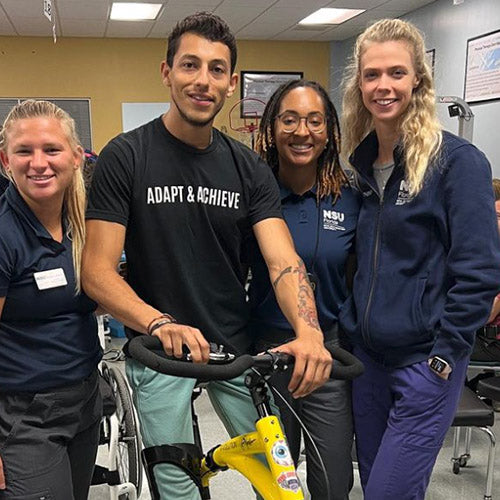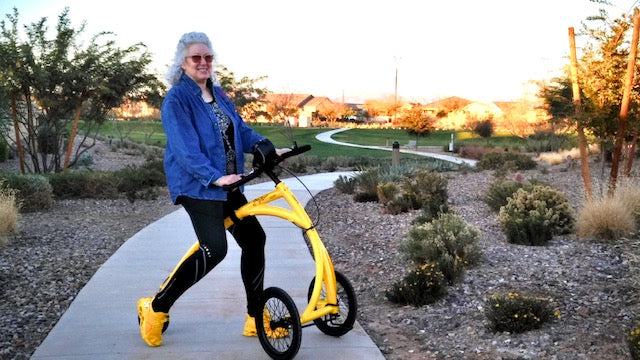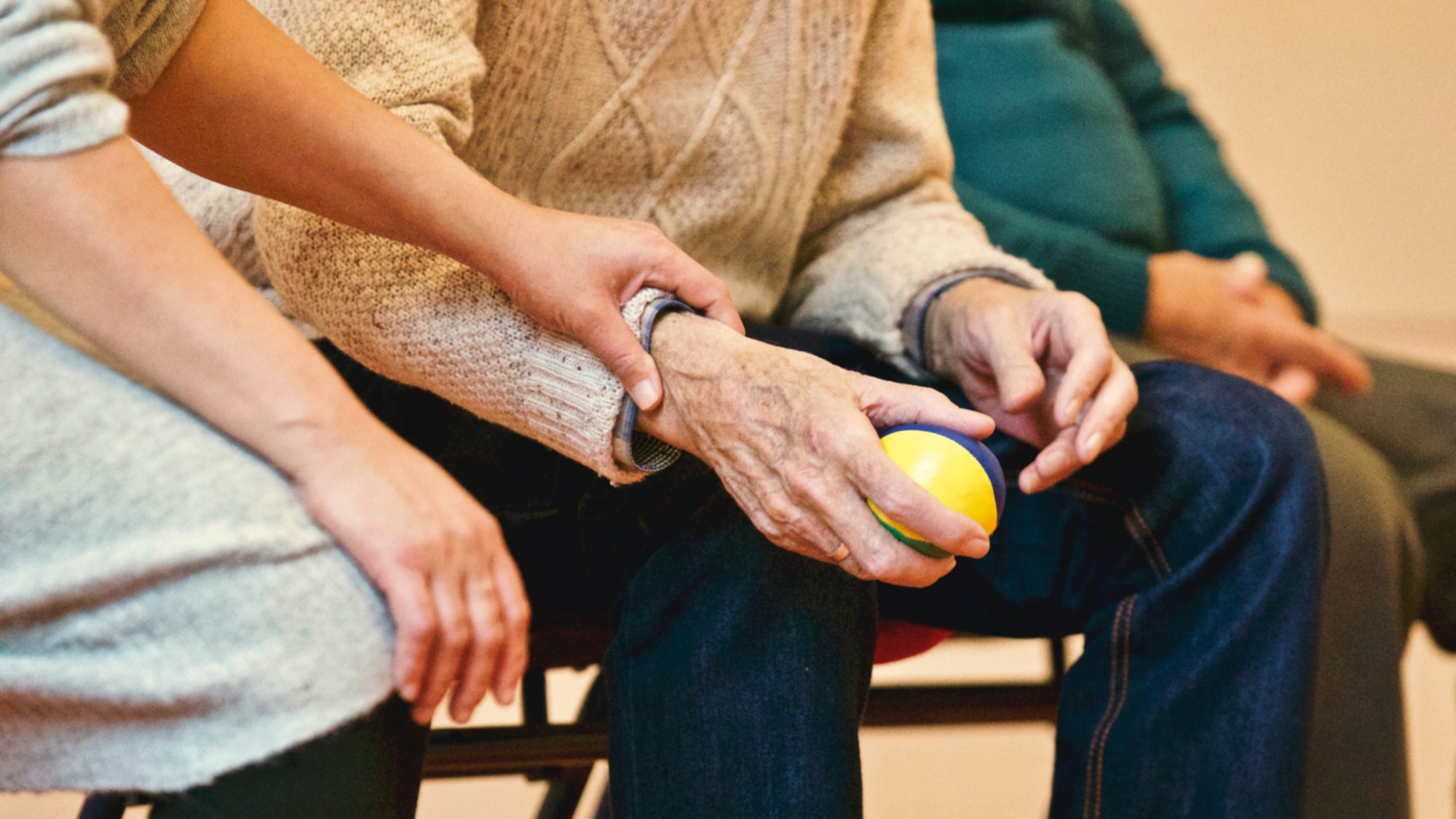When Eileen Brusek was looking around for a mobility solution and came across the Alinker, she pictured herself zooming down the street for the first time in nearly a decade. “I had visions of just being able to take off,” she recalled.
But when she and her husband, Michael, received her Alinker and set it up for the first time, the reality was a little different than what she’d envisioned. “We got it, we put it together, very excited. Took it out, and it took me over thirty minutes to walk one square block in Chicago. When I got back in the house, I was just demoralized,” she said. “I was just like, ‘Oh my gosh, this is not what I thought it would be, this is so hard.’ It took me longer to walk on the Alinker around the block than it took me to walk with my crutches, essentially. And so I was really unhappy about it.”
Eileen recounted the struggle of the first few weeks with the walking bike. Her legs don’t work well as a long-term impact of paralysis caused by West Nile virus. Between her inability to move the Alinker easily across most surfaces, and the pain from getting used to the seat, she was bumping up against the 30-day trial period and feeling ready to give up on the Alinker and return it. But she brought the Alinker to the gym, a facility connected to a hospital where a number of doctors and other health professionals work out, and it was their optimism about the Alinker that convinced her to keep it after all.

Once she’d decide she was keeping it, she and Michael set about making adjustments that would make it more comfortable. They bought a gel seat, biking underwear, chamois cream, and quickly learned that jeans do not make good riding wear. And then she started practicing.
“I just kept working at it,” she said. When the weather turned wintry, they started bringing it to an indoor track to practice, and she would just do little bits every day, slowly building the muscle and stamina required to comfortably use it. Now, four years later, she’s gone from taking an hour to walk one block, to being able to walk a mile in 22 minutes.
Eileen’s story is a great example of why we say “when design matches your determination.” The Alinker is designed to enable more people to access mobility and independence, but it’s not an overnight solution. It takes work and commitment. “I just imagined that this was just going to be life changing,” Eileen said. “And in fact it has been, but it took a while. It has been a process for it to be life changing.”
Eileen still struggles with uphills and steep declines, but has worked out a system with her husband where he can push her a bit on the uphills, and hold her waistband on the downhills. “There are times when he has to help me out, but it’s been life changing for him too,” she said. “He no longer has to be the one to be responsible for my being able to move forward, and being able to negotiate places.”
In the four years she’s had the Alinker, Eileen has used it daily. Trips to the store, to the gym, on numerous trips around the world, and to social events where she’s delighted that she can walk around and mingle, no longer having to sit in the corner waiting for people to come talk to her. “I may not be able to go as fast as I want, or get everywhere, but if we’re going out, just even to the store, I use it…I feel like it is that freedom.”
When asked whether she had any advice for people just starting out on an Alinker, she was specific: “Don’t wear jeans. Don’t wear jeans.”
But also had some sage advice, beyond just the kind of pant seams you’ll want to be dealing with. “You probably have a vision that’s not realistic initially,” she said. “And so the reality of the situation is going to be different than what you thought it was going to be, and you just have to continue to work at it, and work hard at it. And just don’t give up. Hopefully you’ll be surrounded by people who support you, and just keep trying.”

